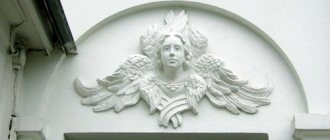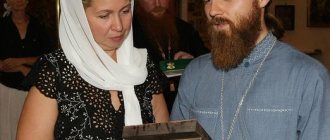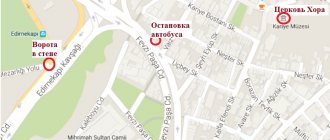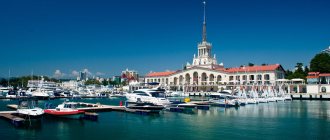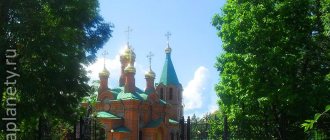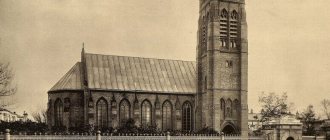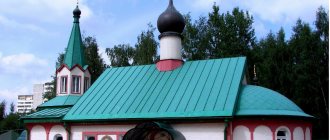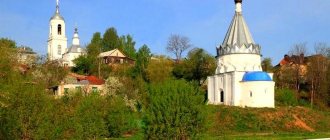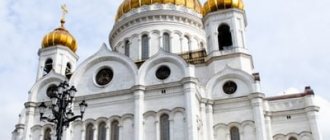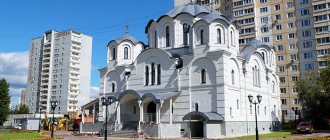A story with miracles
However, even the history of this building is unusual. It is associated with a large number of miracles - fictional and real. And it also contains a lot of well-invested money - which is also a miracle of its kind.
Tea King
Until the mid-19th century, Foros was a tiny village of several courtyards. The impetus for its development was the construction of a nearby road to Sevastopol. But things really changed when in 1887 the estate next to the village was bought by a Moscow rich man - merchant A.G. Kuznetsov.
He was a very moneyed man - Kuznetsov owned the country's largest tea trading company. Wealth did not give him good health - the merchant moved to Crimea not on a whim, but on the urgent advice of doctors. However, he decided to settle down “in a sanatorium” with comfort - he planted new vineyards, built a rich mansion (called a palace because of its luxury), and laid out a park (the now famous Foros Park).
It should be noted that after this the merchant still had free money and land in his Crimean possessions. And then miracles began to happen around him.
Miracles in Foros
Fans of Foros legends will never agree on which of the people close to the merchant Kuznetsov decided one day to ride around the outskirts of Foros in a wheelchair. There are three contenders: himself, his daughter, or some unnamed passion. But then the plot is presented by everyone in the same way.
The horses harnessed to the carriage took off, which was especially dangerous on the mountain road. The carriage was already approaching a high cliff above the sea when the horses suddenly stopped dead in their tracks. All participants in the adventure survived. And the merchant, grateful to fate, decided to build a church on the very spot where the running horses stopped.
However, A.G. himself Kuznetsov explained his pious decision differently. He also appealed to a miracle, but to a different one.
Miracle in Borki
On October 17, 1888, the Russian Empire was shocked by the news of a train accident. At the Borki station (now the Zmievsky district of the Kharkov region of Ukraine), the “royal train”, a special train in which the family of Tsar Alexander III was returning from Crimea, derailed and fell downhill.
In the disaster, 21 people died, several dozen were injured, but the imperial family escaped with bruises, scratches and serious fear. In the “miraculous salvation” they immediately saw the hand of providence.
In fact, the royal family should have thanked their head for saving them. Alexander III was a tall, large man of considerable physical strength. He was also a good family man. The king held the heavy roof of the carriage on his own back for several minutes while his wife and children climbed out. Thanks to this, no one was run over.
We should also say thanks to track engineer S.Yu. Witte, who repeatedly warned that the royal train was being staffed in violation of the rules, and that the road near Borki was dangerous. He was not forgotten - soon the modest engineer became the prime minister of a huge empire. But they also considered it necessary to thank higher powers.
Through the efforts of the imperial family and court, a monastery and church were built at the site of the disaster, and other memorial signs were installed. But some loyal subjects of Alexander III saw in the “miraculous salvation” an opportunity to demonstrate their loyalty to the sovereign-emperor. The merchant Kuznetsov was one of them.
Temple for Salvation
Local residents had previously asked their moneyed “neighbor” to help with the construction of a church in Foros. After the incident in Borki, the merchant made an official request to the king: permission to dedicate a new church to “miraculous salvation.” It is clear that no one prohibited this.
However, there is also a “pragmatic” version of construction. The tea trade was legally a state monopoly; permission was required. Therefore, there is an assumption that Kuznetsov in this way thanked the royal family for the benefits provided to his business.
They approached the matter in detail - Kuznetsov invited the best craftsmen. And engineer Bazhenov suggested an unusual place for construction. In his opinion, the new temple should have been built on a small site near Foros. It rose more than 400 m above sea level. The place was more than unusual. But the engineer explained his proposal by the beauty of the views opening from there. It was probably at that time that the legend about the stopped horses also appeared - the rock was indeed almost vertical.
The proposal found understanding with academician of architecture N.M. Chagin, to whom Kuznetsov ordered the design of his temple. And they began to build the church on a small area above the cliff, overlooking the sea. It is noteworthy that the building material used was not brick, which was normal according to the ideas of that time (quite similar to modern brick), but plinth.
Such a specific brick (it is flat, in shape rather resembles a book of medium thickness) was used by ancient Russian temple builders. In Foros they used plinth of two colors - yellow and red, in layers. However, this “striation” is not visible to anyone, since the walls were then lined with Inkerman stone.
The loyal gesture did not come cheap for the tea king. According to available information, the temple itself was valued at 50 thousand rubles. In addition, the merchant allocated 2.5 acres of land for the construction of housing for the ministers of the future church and contributed another 50 thousand rubles to the Synod treasury. - already for its content.
Mosaic masters from Italy took part in the construction; the interior painting and icons were carried out by well-known icon painters in the country. Construction took 3 years. The consecration of the temple (as the Church of the Resurrection) took place in 1892.
Don't miss: TOP 5 beaches in Foros
Where is:
The Church of the Resurrection of Christ is located above the village of Foros, on the western part of the Southern Coast of Crimea, between Yalta and Sevastopol. If you drive along the Sevastopol Highway, the church can be seen from afar; it rises on the Red Rock, at the highest point of the mountain. The sight seen seems unreal - built on the very edge of an almost sheer cliff, it appears to be floating above the sea. Its beauty and grandeur can be viewed, forgetting about time. Its 9 domes, located at different heights, are visible from tens of kilometers away. The famous landmark represents a worthy place in the country's cultural heritage.
Complex biography
Alexander III never visited the church dedicated to his salvation. But in 1898, his son, by that time already an emperor himself, Nicholas II, and his family visited her. A.P. also came here. Chekhov, after moving to Yalta, he established a good relationship with the abbot. There was a small school attached to the church; judging by the documents, the writer provided some assistance to it.
Soon after the establishment of Soviet power in Crimea, the church was closed, and expensive utensils (richly decorated with gold and stones) were used in the operation “diamonds for the dictatorship of the proletariat” - requisitioned to replenish the gold reserves. The building itself was soon acquired by the Foros sanatorium to set up a restaurant. Despite its risky location, the church was not damaged during the devastating earthquake of 1927.
During the Great Patriotic War, it became clear how well the workers of N.M. worked. Chagina - the church building served as a good fort for border guards from the famous group of Lieutenant Terletsky. They successfully held the defense there under heavy fire; After the war, the inscription “Partisans, beat the fascists!” was discovered on the wall of the church. The Nazis set up a stable in the church (as a result the mosaic floor was damaged) and removed window sills made of a rare type of marble.
Further, the history of the church again acquires legendary features. Allegedly, after the war, an extension was made to it, and a restaurant was opened in it again. But the extension was demolished after a distinguished guest, the Shah of Iran, who was visiting N.S., refused to dine at the restaurant. Khrushchev.
Then the building was used as a warehouse for some time, until a fire broke out there in 1969. Devoid of domes, windows, doors, the building stood abandoned for a long time. In 1981, restorers examined it, but the matter did not go further than the examination. However, the idea of building a boarding house on this site died out. It is alleged that local residents opposed the construction plans, but there is no convincing evidence of this. In any case, after an examination by specialists, the church was recognized as an architectural monument.
The next stage in the history of the church is associated with the construction of the famous Foros dacha of M.S. Gorbachev. Here the creators of legends again do not come to a common opinion. Either for the sake of the General Secretary's dacha, the temple was going to be demolished again (so as not to attract unnecessary attention to Foros), or vice versa - the famous Madame Gorbachev expressed a wish that the building be restored.
In any case, the second idea was realized - restoration work began in 1987. However, during the time of Gorbachev, the fashion for returning religious buildings to believers appeared in the USSR. This happened with the Foros Church - it was transferred to the local religious community even before the restoration work was completed.
Read: Gorbachev's dacha in Foros
No, there was no splendor after that. In 1997, the new rector of the temple became a victim of murder. However, there was no ideological component here - two bandits simply decided to rob him. In 2004, the then current President of Ukraine L.D. became interested in the church. Kuchma. By his orders, he ensured that additional restoration work was carried out - laying mosaics, performing paintings and gilding.
After this, the church regained, if not its original appearance, then its original luxury. Kuchma took credit for this and declared that the Foros Church should be and became one of the most luxurious and rich in Ukraine. He personally presented the restored temple with an icon “in commemoration.”
The Church in the events of the 20th century
Before WWII
- 1892 - On October 4, the temple was consecrated, and Father Pavel Undolsky from the Vladimir province became its only priest before the 1917 revolution. A parochial school is being organized in Baydary, and a literacy school is being organized in Mukhalatka. Father Pavel's friend and co-founder of the school was Anton Pavlovich Chekhov .
- 1917 - despite the consequences of the Revolution, services were still held in areas remote from the center
- 1924 - the temple is closed. According to some sources , Father Pavel was exiled to Siberia , and according to others, he lived in a house next to the church for another 3 years, after which he died of a pulmonary disease.
- In 1927, by decision of the commission for the confiscation of valuables, all church valuables were taken away and disappeared without a trace.
- In 1934, the church, along with two houses, was purchased by the Foros Sanatorium from Yalta Raizo for 18,000 rubles.
During the Second World War, the church served as a refuge for a detachment of partisans led by Alexander Terletsky. The walls of the temple were damaged by bullets and shell fragments. During the German occupation, looting and destruction continued. The wall panels and window sills were removed from the church, and the church itself was used as a stable.
By the way, you might have come across a photo of a tunnel like this on the Internet. This tunnel existed before the war, during which it was blown up.
After WWII
a meeting between Khrushchev and the Iranian Shah was to take place in the 60s . But the Shah refused to eat food in a religious building, to which the indignant Secretary General ordered the demolition of the church and that’s it. But they didn’t demolish it, it survived.
In 1972, a new South Coast Highway was opened along the route, and the former church disappeared from attention. There was a warehouse here where there was a big fire.
Another attempt to get rid of the church was made during the construction of a dacha in Foros by Mikhail Sergeevich Gorbachev . But through the efforts of Raisa Maksimovna, the temple was not only preserved, but was also subject to restoration.
In 1987, services began to be held here again.
On April 22, 2004, during a visit to Crimea, Ukrainian President Leonid Kuchma ordered the church to be restored. And already on August 4, I came to personally accept work from the foreman. The first festive service was conducted by Metropolitan Lazar of Simferopol.
Visiting rules
Due to the peculiarities of the location of the Foros Church, it is usually visited only by believers, and for a specific purpose of a religious nature. However, the interesting building also attracts the attention of people who are not believers or do not belong to Orthodoxy. But they often visit other sights at the same time - Kuznetsov’s Foros estate, the Baydar Gate. A visit to the Church of the Resurrection is included in the program of many sightseeing tours along the South Coast.
Those setting off to explore on their own should take into account that the road to the church (paved and in good condition) is still quite difficult due to sharp turns - you should drive carefully. It is necessary to take into account that there is a parking lot near the church itself, but it is small.
On religious holidays and other events (for example, if there is a wedding or christening), it can be tightly packed, and you have to leave the car at a considerable distance from it and then walk. However, you can visit the church in these cases - no one closes it and does not restrict access.
And most importantly, the church is active. Accordingly, they impose requirements on the clothing of potential visitors. Those tourists who definitely want to go inside are advised to take this into account. However, many go the other way - limiting themselves to external inspection and the opening views. For objective historical reasons, they don’t lose that much from this. There is no entrance fee, as well as on-site excursion services - unless you come with a guide.
As for the timing of visiting the attraction, it is better to avoid winter, when the serpentine road access can be dangerous. Otherwise there are no restrictions. The church is open all year round and is always beautiful.
Why go here
The place that Kuznetsov chose to build the church is unique.
From here you can clearly see Foros itself, the coastline, and the rock sculptures on the right hand. On the left you can see a serpentine serpentine , along which tourists climb on their 4-wheeled carriages.
In general, the place is noble, spectacular, romantic. It’s not for nothing that many Sevastopol couples decide to have a fidelity dinner within these walls.
In addition to the surrounding beauty, the church itself looks great. The monument of Russian culture in the neo-Byzantine style looks fabulously incomparable.
In addition, you can drive along the old Sevastopol road and see the 19th-century architectural monument Baydar Gate . Here you can dine at the Shalash or go down to the Orly in the village of Orlin.
Architecture of the Foros Resurrection Church
The architecture of the Foros Church is quite consistent with the tastes of the turn of the 19th-20th centuries. Alexander III introduced a fashion for Russian antiquity - sometimes even excessive. Accordingly, similar trends began to appear in the design of buildings.
The Foros temple is basically Byzantine style, which is characterized by the so-called cross-dome design. Its essence is that the main premises represent a cross in plan, and a dome rises above the central part, symbolizing the sky.
Byzantine architecture is characterized by a special dome design - using columns and drums (that is, the dome is installed on them, and not on the walls). As a result, the room is better illuminated from the inside with natural light, and the structure itself becomes visually lighter.
However, the Foros Church is characterized not only by Byzantine features. Some of its features should be attributed to the Russian style - in particular, the presence of a beautiful covered entrance-porch and several “poppies”. But there are no contradictions between these styles, so overall the structure looks very harmonious.
Finally, the temple is also characterized by some deviations from the canons of Orthodoxy. So, it is oriented not to the east, as required by the rules, but to the south, towards the sea. This feature is caused by the limited area of the rock on which the cathedral stands and its shape. As a result of the "reorientation", the church became more visible from the sea.
For this reason, she had an “additional duty” - to serve as a guide for passing ships. The church was even marked on all sea maps. This explains the appearance of the legend about plans to demolish the building during the construction of Gorbachev’s dacha - the church could actually serve as a target indicator for a “potential enemy.”
Both Byzantine and Russian styles imply rich decoration of the church from the inside. So it was (and is) in the Foros temple. The dome and walls were traditionally decorated with paintings. Mosaic floors and stone carving elements were used as additional decor. But the fate of these decorations was worse than that of the temple as a whole, so now parishioners are mainly observing the work of master decorators of the early 21st century.
Description[edit]
The church was built in 1892 in the Byzantine style of a cross-domed church. In the 4th century. The cross became a Christian emblem, and the shape of the cross was used as the basis for religious buildings. Temples were built on a rectangular plan with a cross inscribed in it. A dome was built over the middle cross.
Byzantine architects used a technique where the dome rested not on the outer walls, but on a ring of columns and pillars located inside the building, above which a drum was placed. The space under the dome was expanded by adding a bypass behind this ring. The dome had windows along the perimeter of its base and was flooded with daylight. The domed head crowning the temple gave it a pyramidal and high-rise composition and was the basis for the bright expressiveness of the appearance of the building.
The service was held in the center of the building, under a dome symbolizing the vault of heaven. The altar was located in the eastern apse, like on a stage, with the entrance on the western side.
The main building material was baked brick - plinth - low, almost flat rectangles. The masonry was carried out using lime mortar with the addition of brick chips, rows of red brick and yellow stone alternated, the walls were lined with white Inkerman stone.
In Byzantine churches, the interior was rich, even luxurious, creating an appropriate religious atmosphere. The grandeur of the temple was enhanced by multi-colored marble cladding, mosaics on a golden background, fresco paintings, and decorative stone motifs. The inside of the temple is painted with ornaments and images of the 4 Evangelists, the Ascension of Christ, the Protection of the Mother of God, St. Gregory, Martyr Tatiana, Right. Anna, St. Alexis and the Resurrection of Christ. The great ornate, complex ornament in the Byzantine style on the walls, twenty-eight stained glass windows gave the church a special lightness, transparency and festivity.
The cathedral was built using numerous domes, similar to Russian wooden churches, in two tiers, on the sides and in the center there are domes of different sizes, there are nine of them, thanks to which the Foros Church resembles Moscow churches of the late 18th century.
The temple is unique in its location. Not only was it built on a steep cliff, but it was also located differently from ordinary Orthodox churches. The fact is that it faces not to the east, but towards the sea. This feature is characteristic only of southern coastal churches.
The uniqueness lies in the fact that real experts in mosaic work from the workshop of the famous Italian Antonio Salviatti from Vincenza were involved in the decoration of the temple. The mosaic floor is reminiscent of the ancient mosaic of Chersonesos. The columns, panels, and window sills were made from Carrara marble. A carved oak iconostasis with gilded royal doors decorated the temple; almost all the icons in the temple belonged to the brushes of famous Russian painters A. Korzukhin depicting Christ the Savior. There were also other paintings in the interior of the temple - “The Annunciation”, “The Last Supper”, “Prayer for the Cup”. K. E. Makovsky, who wrote “The Nativity of Christ”, “Resurrection”, “Mother of God”, N. E. Sverchkov and others. Unfortunately, the paintings have not survived.
In 2004, another restoration of the temple was carried out. The picturesque decoration inside the temple was recreated, the paintings were restored, and a mosaic was created on the facade.
Compositions in the circles of the Transfiguration of Christ and the Intercession of the Virgin Mary were created by the artist A. S. Pigarev in 2004, the images of the Evangelists and the mosaic of the Resurrection of Christ on the facade of the altar apse were created by the artist A. I. Petrova in 2004, the masters belong to the St. Petersburg school of painting, like the authors original painting. The church's ornaments were recreated by graduates of the Crimean Art College named after. N. S. Samokisha.
Resurrection Church today
Today, the church itself has not only been put in order - the surrounding area is also a tourist area. There is not much space there, but there is enough space to explore the building itself and the surrounding landscapes.
Quite a significant number of tourists generally prefer to admire the temple from the Baydar Gate (the visibility there is excellent) or while walking along the sea (also beautiful). Photos of the church used for advertising purposes are most often taken from the observation deck of this pass.
The temple building itself is also surrounded by an observation deck. For safety, it is surrounded by a fence, but the fence is low and does not limit visibility. This is a small area for relaxing and taking photographs. But it is not the church that is being photographed, but the sea views and mountains, since the small size of the territory does not allow one to properly “capture” the building with the lens.
To photograph the church, photographers walk back a little along the access road or climb up nearby rocks (this needs to be taken into account and shoes accordingly). The site has benches for relaxation and paid viewing binoculars. There is only one drawback - there is not enough shade. A memorial sign to A.G. was installed on the same site. Kuznetsov, as the “sponsor” of the creation of the church. The sign looks like a small stone plaque with an inscription and bas-relief.
The outside of the church itself is decorated in white-gray-green tones with a small amount of gilding - this immediately distinguishes it from buildings in the Baroque style. But mosaics are widely used as a decorative element.
This technique is used to create images of saints in special medallions, as well as to decorate the porch vaults. The temple has stained glass windows that decorate the windows - they can be seen from the outside. The relief decor is very modest, mainly in the form of smooth cornices and borders. There is a sign at the entrance notifying everyone about the role of L.D. in the restoration of the temple. Kuchma.
The interior decoration of the church is very rich. There is gilding, wall paintings, elements of stone carving, and mosaic floors. Daylight, passing through the stained glass windows, complements the picture. The mosaic pattern of the floors is stylized to resemble antique patterns. Elements of the painting depict the four evangelists and several revered saints.
However, everyone who is interested in antiquity needs to remember what was said above and understand: almost all of the decoration of the temple is an example of painting from the beginning of the century. The main authors were the artist A.I. Petrova and senior students and graduates of the art school named after. Samokisha.
Their work has aesthetic, but not historical, value. The original painting was destroyed - during shelling by the Nazis, as well as in a fire in 1969. Some of the icons were taken away - if they survived, their location is unknown. The same applies to the mosaics - they are completely new, since the original ones died.
This time, too, domestic craftsmen worked here, not Italians. The valuable stone of the columns and window sills has been replaced, but it is also different from the original (since Carrara marble is now difficult to obtain).
The internal arrangement of the church corresponds to the general Orthodox canons with one (quite understandable) exception - the altar is located not in the eastern, but in the southern aisle. However, there are other Orthodox churches on the South Coast with this feature.
Wonderful angel
The view from the cliff will definitely amaze you. And if you look closely, on the rock (looking at the sea on the left) you can see an angel sitting on a rocky ledge with folded wings.
The discovery of a rock angel can serve as an occasion for a wonderful allegory taken from the Holy Scriptures .
It states that the first news of the Resurrection of Christ was heard precisely from the angel who sat on the stone that covered the entrance to the tomb with the body of Jesus Christ. Perhaps this angel is waiting in the wings to tell us the good news.
Try it yourself , and I’ll give you a hint in the photo at the end of the article.
How to get (get there) to the temple
The closest stop to the temple is “Foros”. You can get here by Sevastopol bus or minibus No. 128.
But the stop is located 2.5 km from the temple, so many tourists go here by car, here is the route to the attraction from Yalta:
Here's how you can get here from Foros:
So it’s easy to get here from Sevastopol:
Where to relax after visiting a unique Crimean temple?
The path to Foros Church is not the easiest, even if you go by car. After visiting this exciting attraction, you will need a pleasant and relaxing rest. The necessary conditions for the comfort and harmonious relaxation of its guests are provided by a five-star hotel with a unique history - Villa Elena. The location in the center of Yalta allows hotel guests to visit any objects of the South Coast, because from the city center it is easiest and fastest to get to them. Villa Elena Hotel & Residences offers luxury holidays in a welcoming atmosphere and noble surroundings. Developed infrastructure, highly qualified staff, exclusive services are a guarantee of an impeccable holiday in Yalta.
Contacts. Schedule of services. Video
- Address: Foros village, Yalta, Crimea, Russia.
- GPS coordinates: 44.404342, 33.788338.
- Phone: +7-3654-25-21-00, +7-978-059-87-53.
- Official site:
- Schedule of services:
Tourists leave reviews about visiting the Foros Church quite often - it is a popular excursion site. You can often see her photographs on advertising brochures - the beautiful building attracts attention. And indeed: history confirms that not only Orthodox Crimeans have the right to consider this building “theirs.” After all, it was built by Italians, draws on Greek architectural traditions, and has served and continues to serve as a reference point for sailors of all faiths and nationalities. In conclusion, we offer a video on the topic, enjoy watching!
Liked? Share with your friends!
